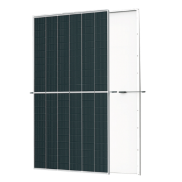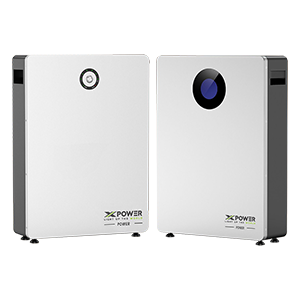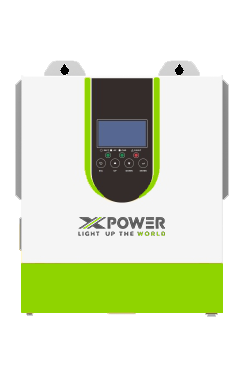Do You Need an Inverter for Portable Solar Panels? A Complete Guide to Solar Power Setup
Time of Release : 2025-03-25
Portable solar panels are an excellent way to generate clean, renewable energy while on the go. Whether you’re camping, boating, or using solar energy for emergency backup power, the right equipment is essential. One of the most important components of a solar setup is the solar panel inverter. In this guide, we’ll explore whether you need an inverter for portable solar panels, the different types of inverters, and how to choose the right one for your needs.
What Is an Inverter and Why Do You Need One for Solar Panels?
An inverter for solar panels is a device that converts direct current (DC) electricity, which is produced by portable solar panels, into alternating current (AC). AC power is the form of electricity used by most household appliances and electronics, such as refrigerators, laptops, and televisions.
If you plan to use your portable solar panels to power these kinds of devices, then an inverter is essential. Without an inverter, you won’t be able to run devices that require AC power, limiting your setup’s versatility.

Types of Inverters for Solar Panel Systems
When it comes to solar power systems, not all inverters are created equal. There are several types of inverters, each suited for different uses. Let’s break them down:
1. Pure Sine Wave Inverters
- Best for: Sensitive electronics like laptops, phones, medical devices.
- Description: These inverters produce a smooth, clean wave of AC power, similar to the electricity provided by the grid. They’re ideal for running sensitive electronics that could be damaged by a less stable power source.
2. Modified Sine Wave Inverters
- Best for: Power tools, lights, fans, and non-sensitive devices.
- Description: These inverters produce a less smooth power waveform than pure sine wave inverters. They’re typically more affordable but may cause issues with sensitive electronics. However, they work well for less complex devices like power tools and basic lighting.
3. Square Wave Inverters
- Best for: Low-quality appliances or devices that don’t require clean power.
- Description: These are the least expensive and least efficient inverters. They’re rarely used in modern solar setups due to their poor quality of power output, but they may still be found in very basic or low-cost systems.
Do You Need an Inverter for Your Portable Solar Panels?
Now that you know the types of inverters available, the next question is whether you actually need one for your portable solar panel setup.
The answer depends on what you intend to power with your solar system.
- For DC-powered devices (like lights or fans that run directly from solar panels), you don’t need an inverter. You can use a charge controller to manage the flow of power from your panels directly to the devices.
- For AC-powered devices, you absolutely need an inverter. An inverter is required to convert the DC power from your portable solar panels into AC power, which is the standard for most household appliances.
Benefits of Using an Inverter with Portable Solar Panels
There are several benefits to incorporating an inverter into your portable solar panel system:
- Versatility: An inverter expands the range of devices you can power. Whether it’s a laptop, fridge, or TV, an inverter makes your solar setup more versatile.
- Efficiency: A high-quality inverter helps maximize the efficiency of your solar power system, ensuring that more energy is available to power your devices.
- Protection for Electronics: Pure sine wave inverters provide a stable power supply, preventing potential damage to sensitive electronics, ensuring that your devices run smoothly without interruptions or risk of damage.
How to Choose the Right Inverter for Your Solar Setup
Choosing the right solar power inverter for your solar setup depends on several factors:
1. Power Requirements
- Check the wattage of the devices you plan to power. The inverter needs to handle the total wattage of all devices that will be connected at any one time. Be sure to account for surge power, especially for devices like refrigerators that have a high startup current.
2. Type of Inverter
- As discussed, choose between pure sine wave, modified sine wave, or square wave depending on the types of devices you need to power.
3. Voltage Compatibility
- Make sure the inverter matches the voltage of your solar panel system. Common voltages for portable solar systems are 12V and 24V.
4. Portability
- If you plan to move your solar setup frequently, look for a lightweight and compact inverter that can easily be transported.
5. Budget
- While pure sine wave inverters are the most efficient and safest option, they can also be more expensive. If you don’t need to power sensitive electronics, a modified sine wave inverter might suffice.
Conclusion
Inverters are a critical component of most solar panel systems, especially when you need to power AC devices. Whether you need a pure sine wave inverter, a modified sine wave inverter, or even a square wave inverter, the choice depends on the devices you plan to run and your specific solar power needs.
If you’re looking to power sensitive electronics like laptops or medical devices, go for a pure sine wave inverter. If you’re on a budget and powering simpler devices, a modified sine wave inverter can do the job.
By understanding the role of an inverter in your solar setup and choosing the right type for your needs, you can maximize the efficiency and versatility of your portable solar panels.
For more information on setting up your off-grid solar power system or choosing the best inverter for your needs, check out our guide on choosing the right inverter.





